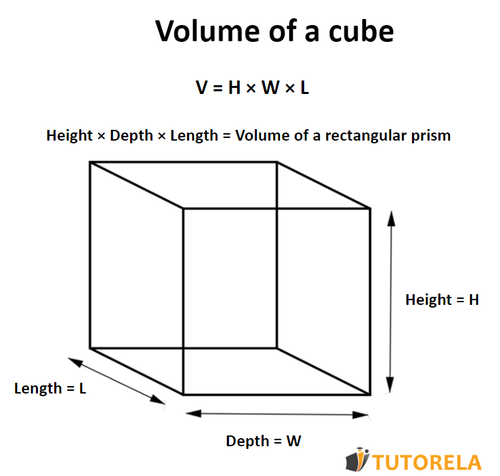A cube is a type of cuboid in which all three dimensions (length, width and height) are identical. All cubes are made up of of six identical squares.
To find the volume of a cube we must go through the same steps as to find the volume of an cuboid, that is:
Length (L) × Depth (W) × Height (H).
Since the length, width and height are all equal, we only need to know one of them to calculate the volume.
